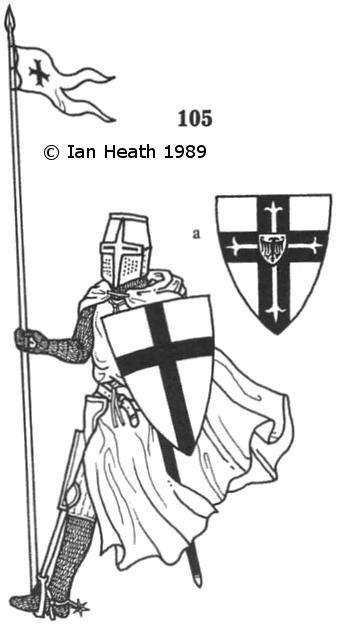
TEUTONIC KNIGHT, 13th CENTURY
An extract from Armies of Feudal Europe 1066-1300by Ian Heath

105. TEUTONIC KNIGHT, 13th CENTURY
The habit was replaced by a white surcoat and cloak on active service, and contemporary sources speak of these white uniforms serving as perfect camouflage for the Knights in their winter campaigns in the frozen wastelands of Prussia; the cloak, however, was usually left with the baggage in battle. The black cross was their only ornament, personal coats-of-arms being forbidden (though interestingly while one shield on Conrad of Thuringia’s tomb displays the black cross on a white field another shows a rampant red and white lion on a blue field with only a miniature white shield and black cross in one corner indicating any connection with the Order). By the mid-13th century the Hochmeister had a more elaborate cross, edged with the gold cross of the kingdom of Jerusalem from 1219 and charged with a cross fleury (granted by Louis IX of France) and the black on gold Imperial eagle (granted by Frederick II in 1239); 105a, from the shield of Hochmeister Karl Beffart von Trier (1312-24), depicts most of these features. Sergeants of the Order substituted a grey surcoat for the white one of brother knights, charged with a Tau cross.